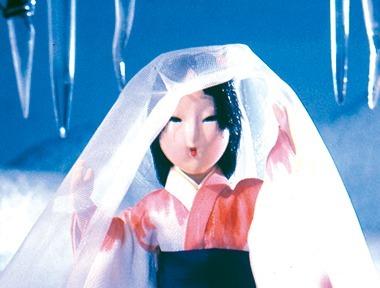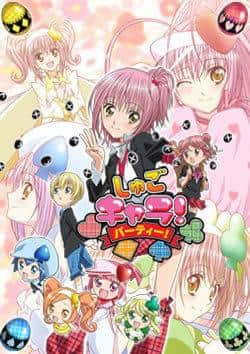"The Crane's Return" Review: A moving story and its appeal

"The Crescent Moon" - A classic anime that depicts the good old Japanese spirit■ Public Mediatheater ■ Original MediaFairy tales ■ Release dateJuly 1966 ■Distribution companyToho ■Frequencies17 min ■ Number of EpisodesEpisode 1 ■ ProductionGakken Film Department ■Works©Gakken ■ StoryAn old couple lived quietly deep in the snowy mountains. One day, the grandfather rescued a crane caught in a trap in the mountains. That night, a young girl named Tsuu came to visit the grandfather's house. Tsuu was a kind and hardworking girl who lived with the elderly couple and often helped the grandmother with her weaving. Tsuu produced beautiful cloth, but for some reason she was never seen working. She would always say, "Please don't watch me weave cloth," and shut herself up in the weaving room. However, as Tsuu wove cloth, the grandfathers began to notice that she was becoming thinner. ■ExplanationThis puppet animation of a famous Japanese folk tale produced by Gakken Film Division. It was made as an educational film for children, and has won many awards, including the 20th Mainichi Film Awards Educational Culture Film Award, the 8th Child Welfare Culture Award, the highest award at the Educational Film Festival, the Tokyo Educational Film Award Gold Award, the Minister of Education Award, the Minister of Health and Welfare Award, and the Ministry of Education Special Selection. It was shown alongside other films, including "Frankenstein's Monster," "Sanda vs. Gaira," and "The Jungle Emperor." ■Cast・Masuyama Eiko, Uchimura Gunichi, Kato Tamae, Uchiyama Morihiko, Yamamoto Kiyoko, Yoshikawa Kazuko ■ Main staff・Producer: Masatsugu Hara ・Production Manager: Hiromi Morishita ・Screenplay: Matsue Jinbo ・Direction: Kazuhiko Watanabe ・Puppets: Akira Sasaki ・Puppet animators: Junko Akiyama, Kyoko Wada ・Set design: Ryo Nakagawa ・Cinematography: Hiroshi Hirai, Yukio Abe ・Sound effects: Yoshitatsu Sonoda ・Sound recording: Aoi Studio ・Planning: The Industrial Bank of Japan ・Production: Gakken Film Bureau ■ Main CharactersUnder investigation The appeal and evaluation of "The Crane's Gratitude""The Crane's Gratitude" is a Japanese puppet animation film released in 1966, and is known as a masterpiece that depicts the good old Japanese spirit. This work was produced by the Gakken Film Bureau and was made as an educational film for children. Since its release, it has won many awards and is highly regarded for its artistic quality and educational value. This work is based on a traditional Japanese folktale, "The Crane's Return of Favor," and tells the story of an elderly couple living quietly in the snowy mountains, and their relationship with a young girl named "Tsu," who appears as a human crane that they rescue. While living with the elderly couple, Tsu weaves beautiful cloth, but in the process she becomes emaciated. The story is filled with themes of gratitude, gratitude, and the spirit of self-sacrifice, making it a great educational material for teaching important values to children. Many talented staff members were involved in the production of "The Crane's Gratitude." Screenwriter Jinbo Matsue skillfully depicted the moving development of the story, and director Watanabe Kazuhiko brought out the beauty and movement of the puppet animation to its fullest. Puppet animators Akiyama Junko and Wada Kyoko realistically reproduced Tsu's delicate expressions and movements, enhancing the visual appeal. Furthermore, staff from each department, including set design, filming, and sound effects, worked together to improve the work's quality. The cast is also impressive, with talented voice actors such as Eiko Masuyama, Gunichi Uchimura, Tamae Kato, Morihiko Uchiyama, Kiyoko Yamamoto, and Kazuko Yoshikawa. Their voice acting expresses the characters' emotions richly and adds depth to the story. In particular, Eiko Masuyama's voice as Tsuu conveys both kindness and sadness, deeply moving the audience's hearts. This film depicts a deep theme in a short 17 minutes. The story is simple yet moving, and is loved by a wide range of people from children to adults. It was also shown alongside "Frankenstein's Monster," "Sanda vs. Gaira," and "The Jungle Emperor," and both films captivated many audiences. Awards and reviews for "The Crane's Gratitude"Since its release, "The Crane's Gratitude" has won many awards and been highly praised for its artistic and educational value. Below is a list of the main awards it has received.
These awards attest to the high quality and educational value of the film. As a film produced by Gakken Film Division, it also played an important role as an educational film for children, inspiring and teaching many children. The background and significance of "The Crane's Gratitude"The background to the production of "The Crane's Gratitude" reflects the social situation in Japan at the time and the importance of education. In the 1960s, Japan was in a period of high economic growth and society was changing rapidly. However, at the same time, there was a sense of crisis that traditional values and culture were being lost. In this environment, Gakken Film Division decided to animate a traditional Japanese folk tale, aiming to teach children important values. This work is a wonderful educational material that depicts traditional Japanese values such as gratitude, gratitude, and the spirit of self-sacrifice, and teaches children the importance of these values. In addition, by using the method of puppet animation, it pursues visual beauty and artistic quality, stimulating children's imaginations. The significance of "The Crescent Moon" is not just to be enjoyed as entertainment, but to serve as an educational film that teaches children important values. This work has inspired and educated many children, and has become an important medium for passing on traditional Japanese values to the next generation. Recommendations and how to watch "The Crane's Return""Tsuru no Ongaeshi" is a work that can be recommended to a wide range of people, from children to adults. It is especially recommended for parents and educators who want to teach children traditional Japanese values. It is also recommended for people who are interested in animation and puppet theater, and those who enjoy artistic works. This work can now be viewed on DVD and on the Internet. You can watch it on the Gakken Film Bureau's official website or through video streaming services. It may also be shown in libraries and school audiovisual rooms, so be sure to check it out. Related works to "The Crane's Gratitude" and their appealLike "The Favourite Crane," other animated versions of traditional Japanese folk tales include the following:
Like "The Crane's Return," these works also depict traditional Japanese values and provide important lessons to children. Please watch these works as well to gain a deeper understanding of Japanese culture and values. Impressions and reviews of "The Crane's Gratitude""The Crane's Gratitude" has been praised by many viewers as a moving work. Many have commented that they were particularly moved by Tsu's self-sacrificial spirit and the kindness of the elderly couple. The beauty and artistry of the puppet animation have also been highly praised, and the visual appeal is also a major point. This work is also highly regarded as a great educational material for teaching children traditional Japanese values. It is screened at many schools and educational institutions, providing children with inspiration and learning opportunities. It also serves as an opportunity for parents and children to deepen family bonds by watching the film together. "The Crescent Moon" is a classic animated film that depicts the good old Japanese spirit, and is loved by a wide range of people, from children to adults. Please watch this film and enjoy the world of traditional Japanese values and beautiful puppet animation. |
<<: Cyborg 009: Episode 1 Review
Recommend
Author sues Apple over Tetris movie, saying it's based on his book
Dan Ackerman, author of "The Tetris Effect: ...
"Saru Masamune" Review: What is the appeal of this anime that intersects tradition and innovation?
The charm and historical value of Sarumasamune ■ ...
The appeal and evaluation of "All-purpose Cultural Cat Girl DASH!": A must-read review for anime fans
All-purpose cultural cat girl DASH! - A new adven...
"Infinite Ryvius": What is the appeal of this masterpiece anime that depicts the mysteries of the deep sea and the struggles of youth?
Infinite Ryvius - Journey from the Abyss The TV a...
Bandai's vertical reading comics brand "Bandai Comics" launched its first batch of works
Bandai Namco, an old game and toy manufacturer, i...
The first episode of the 9th season of "The Solitary Gourmet" was released and will be broadcast in July
At present, the preview image of the first episod...
The spiritual sequel to Initial D, "MF GHOST", has achieved a million-dollar breakthrough by restoring a real Toyota 86 and giving it away!
"MF GHOST", another racing-themed manga...
A thorough review of the limited edition of "Fate/kaleid liner Prisma☆Illya Drei!! Volume 4" with the original anime Blu-ray!
Detailed review and recommendation of Fate/kaleid...
A thorough analysis of the emotion and charm of "Powa Powaan," the song everyone loves!
Powa Powan - The charm and history of Minna no Ut...
Netflix's new drama "Goku Kung Fu Dao" will be launched on August 29th, starring Kenjiro Tsuda
Netflix Japan recently announced that the derivat...
Marvel's "Hawkeye" series is suspected to have started filming and will be broadcast online next fall
Today (March 5), Jeremy Renner, who plays "H...
The appeal and evaluation of Super Beast Machine God Dancouga: A monumental achievement in robot anime
Dancouga: The Ultimate Robot Anime of the 80s &qu...
Wings of Freedom are immortal! Attack on Titan launches 10th anniversary collaboration with Citizen exquisite watches
The famous manga "Attack on Titan" crea...
The legendary supercar from the movie "A Clockwork Orange" was sold at a successful auction for nearly $200,000. Only two of them remain in the world.
At the recent Quail car auction in the United Sta...
Gabriel joins The Last of Us TV series as Joel's brother
According to foreign media Hollwood Reporter, Gab...









